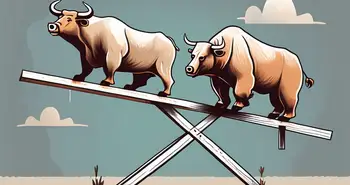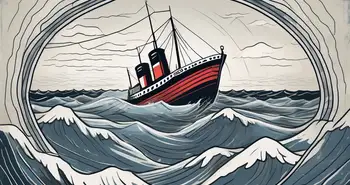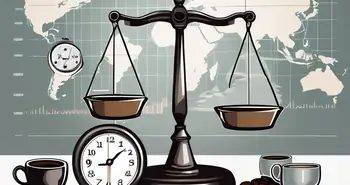3-5-7 Rule in Trading: What It Is, How to Use It, and Practical Examples
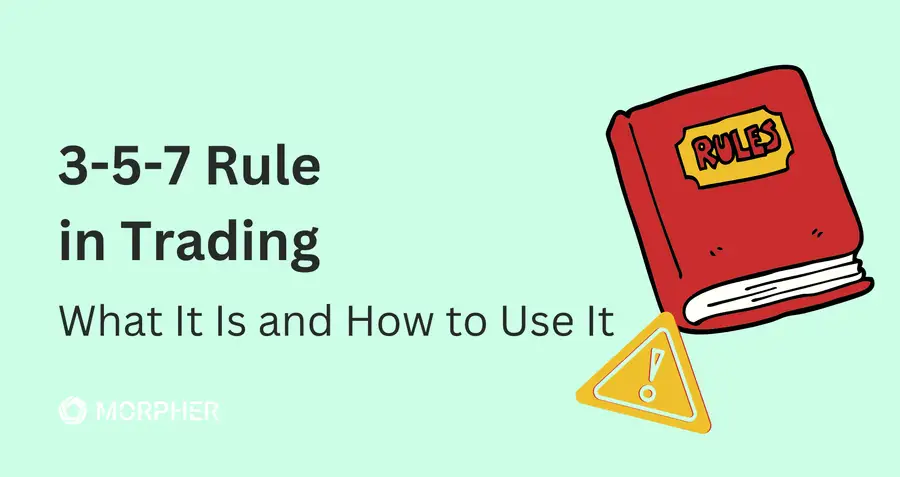
Chasing profits is not the only purpose of smart trading. It is also about managing risk correctly. Every trade comes with uncertainty, and without a solid strategy, even the best opportunities can turn into costly mistakes. That’s where the 3-5-7 Rule comes in.
Think of it as a built-in safety net for your trades, a simple yet powerful guideline that helps you balance risk and reward. By setting clear limits on your exposure per trade, per market, and across your portfolio, the 3-5-7 Rule keeps you in control, protecting your investments from unexpected losses.
In this guide, we’ll break it all down: how the rule works, why it’s effective, and how you can apply it to your own trading strategy. Plus, we’ll walk through real examples to make it practical and easy to follow. By the end, you’ll be trading with more confidence, better discipline, and a clear plan to keep risk in check.
What is the 3 5 7 Rule?
The 3 5 7 rule works on a simple principle: never risk more than 3% of your trading capital on any single trade; limit your overall exposure to 5% of your capital on all open trades combined; and ensure your winning trades are at least 7% more profitable than your losing trades. It’s simple in theory, but success depends on discipline and consistency.
How and Why the 3-5-7 Rule Was Developed
The 3 5 7 rule, also known as the “Three Trade Rule,” was developed by experienced traders who recognized the need for a disciplined approach to risk management. Its purpose is to minimize losses and maximize potential gains by setting specific rules for trade allocation.
Traders often face the challenge of balancing risk and reward in the fast-paced world of financial markets. The 3 5 7 rule was created as a response to this challenge, aiming to provide a structured framework that guides traders in making sound decisions while managing their exposure to risk.

Breaking Down the 3 5 7 Rule
The 3-5-7 Rule isn’t just a set of random numbers, it’s a smart way to manage risk in trading. Let’s break it down and see how it works.
The ‘3' in 3 5 7 Rule
The first part of the rule, 3% per trade, helps protect your capital. It means that no single trade should risk more than 3% of your total trading balance. This prevents a single bad trade from significantly hurting your portfolio.
By sticking to this limit, you stay disciplined and make calculated decisions rather than emotional ones. It forces you to analyze each trade carefully, considering both risk and reward before committing your money.
3% Example: If your trading account has $10,000, the 3% rule means that the maximum loss on any single trade should not exceed $300.
The ‘5' in 3 5 7 Rule
The second part, 5% total exposure, ensures you don’t overcommit to a single market. This means that across all your open trades, your total exposure should not exceed 5% of your total trading capital.
This approach encourages diversification, reducing the risk of major losses if one trade or market performs poorly. It also pushes traders to explore different asset classes or industries, creating a more balanced portfolio.
5% Example: In a portfolio worth $50,000, according to the 5% rule, no more than $2,500 should be invested in a single market or asset class.
The ‘7' in 3 5 7 Rule
The final part, 7% profit target, focuses on making sure your winning trades are worth more than your losing ones. This means aiming for at least a 7% profit on successful trades, ensuring that your wins outweigh inevitable losses.
By setting this goal, you naturally prioritize high probability trades and avoid low-quality setups. This mindset improves long term profitability by making sure your best trades bring in more than what you lose on unsuccessful ones.
7% Example: To avoid overexposure, if a trader has $100,000 in their account, they should not have more than $7,000 exposed to the market at once.
This rule works best when you have the flexibility to manage risk without extra costs getting in the way. That’s exactly what Morpher offers.
With zero commission trading, you can rebalance and adjust your positions as often as needed without losing profits to fees. Since all assets, stocks, crypto, and commodities, are available on one platform. Fractional trading makes it even better, allowing you to size trades precisely to fit the 3% risk rule, no matter how high a stock or crypto price is.
With Morpher, you get full control over your strategy without limitations. Try now.

Case Example: Building a 3-5-7 Portfolio on Morpher
Let’s walk through a simple example of how you can build a balanced portfolio using the 3-5-7 Rule on Morpher.
Step 1: Divide Your Portfolio into 3 Risk Levels
Imagine you have €10,000 to invest. Based on the 3-5-7 rule, you split it into:
- €4,000 (40%) for low-risk assets
- €3,000 (30%) for moderate-risk assets
- €3,000 (30%) for high-risk assets
This creates a balance between stability and growth.
Step 2: Choose Assets for Each Category
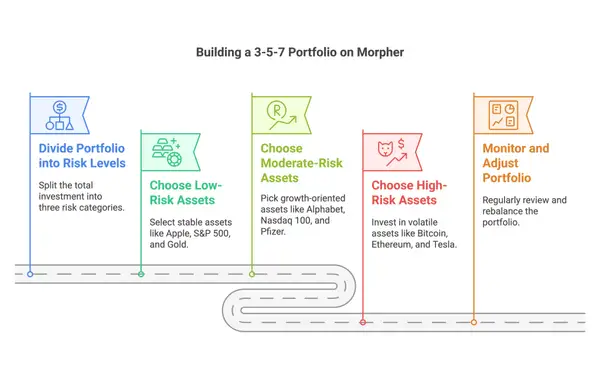
Here’s what this portfolio might look like on Morpher:
📌 Low-Risk (3% Return): Stability & Security
Invest in assets that tend to grow steadily over time.
- €2,000 – Apple (AAPL): Large, stable company.
- €1,000 – S&P 500 Index (SPX): Diversified U.S. market exposure.
- €1,000 – Gold (XAU/USD): A hedge against market swings.
Why? These assets have low volatility and provide steady returns over time.
📌 Moderate-Risk (5% Return): Growth with Some Stability
Mix of growth stocks and sectors with strong long-term potential.
- €1,500 – Alphabet (GOOGL): Tech giant with consistent growth.
- €1,000 – Nasdaq 100 (NDX): Index of top tech companies.
- €500 – Pfizer (PFE): Stable healthcare stock.
Why? These assets offer good growth potential with less risk than high-volatility stocks or crypto.
📌 High-Risk (7% Return): Higher Growth, More Volatility
Invest in assets with high potential but bigger price swings.
- €1,500 – Bitcoin (BTC/USD): Leading cryptocurrency.
- €500 – Ethereum (ETH/USD): Second-largest cryptocurrency.
- €1,000 – Tesla (TSLA): High-growth, innovative company.
Why? These assets can grow fast but fluctuate a lot, making them best suited for higher-risk portions of your portfolio.
Step 3: Monitor & Adjust Your Portfolio
- Every 3-6 months, check your portfolio.
- If crypto or tech stocks grow too much, move some gains to safer assets.
- If a sector underperforms, adjust your allocation but stick to the overall 3-5-7 structure.
Why Morpher is the Best Place to Use This Strategy
✅ Zero commission trading, so rebalancing is free.
✅ Fractional trading, so you don’t need thousands to buy expensive stocks.
✅ One platform for stocks, indices, commodities, and crypto, making diversification easy.
Ready to apply the 3-5-7 Rule?
Start trading commission-free on Morpher today!
Implementing the 3-5-7 Rule in Your Trading
Applying the 3-5-7 Rule is simple. Start by checking your current trades: are you risking more than 3% on a single trade? If so, scale it down. Make sure your exposure to any one market stays within 5%, and keep your total risk under 7% to avoid overexposure. Sticking to these limits helps protect your capital and keeps your strategy disciplined.
Adapting to Market Conditions
Markets aren’t static, and neither should your strategy be. In volatile conditions, tightening your risk limits can help you stay protected. In steadier markets, you might allow for a bit more flexibility without losing sight of the rule’s core principles. The key is to stay adaptable while keeping risk in check.
Avoiding Common Mistakes
A common mistake is treating the rule as a rigid formula rather than a flexible guide. Not every trade is the same, so apply the rule with some context and strategy. Another slip-up? Ignoring risk as your portfolio grows. Regularly reassessing your exposure ensures the rule keeps working for you.
Making the 3-5-7 Rule Even Stronger
The 3-5-7 Rule works best when combined with stop-loss orders, proper position sizing, and diversification. A stop-loss helps keep your 3% risk per trade in check, and spreading trades across different assets makes the 5% exposure limit easier to manage. When used together, these tools create a balanced, risk-aware trading approach.
Disclaimer: This case example is for educational purposes only and does not constitute financial advice. Trading involves risk, and past performance does not guarantee future results. Always conduct your own research and consider your risk tolerance before making any investment decisions.
FAQ
What is the 3 5 7 rule?
The 3 5 7 rule is a risk management strategy in trading that emphasizes limiting risk on each individual trade to 3% of the trading capital, keeping overall exposure to 5% across all trades, and ensuring that winning trades yield at least 7% more profit than losing trades.
Why is the 3 5 7 rule important in trading?
The 3 5 7 rule is crucial in trading because it helps manage risk, prevents impulsive trading decisions, and maintains a favorable risk-to-reward ratio. By following this rule, traders can achieve more consistent profitability and protect their trading capital.
How can I incorporate the 3 5 7 rule into my trading strategy?
To incorporate the 3 5 7 rule into your trading strategy, start by evaluating your current trades and ensuring that no single trade carries more than 3% risk. Gradually limit your overall exposure to 5% across all trades and ensure that your winning trades yield at least 7% more profit than your losing trades.
What are common mistakes to avoid when using the 3 5 7 rule?
When using the 3 5 7 rule, it's important to avoid emotional decision-making and stick to the rule consistently. Deviating from the rule can lead to impulsive trades and increased risk exposure. Additionally, be mindful of your risk tolerance and adjust your trading plan accordingly.
Congratulations! You’ve just learned one of the fundamental rules of investing. Ready to put it into action? Sign up in minutes and claim your welcome bonus!

Disclaimer: All investments involve risk, and the past performance of a security, industry, sector, market, financial product, trading strategy, or individual’s trading does not guarantee future results or returns. Investors are fully responsible for any investment decisions they make. Such decisions should be based solely on an evaluation of their financial circumstances, investment objectives, risk tolerance, and liquidity needs. This post does not constitute investment advice.

Painless trading for everyone
Hundreds of markets all in one place - Apple, Bitcoin, Gold, Watches, NFTs, Sneakers and so much more.

Painless trading for everyone
Hundreds of markets all in one place - Apple, Bitcoin, Gold, Watches, NFTs, Sneakers and so much more.



